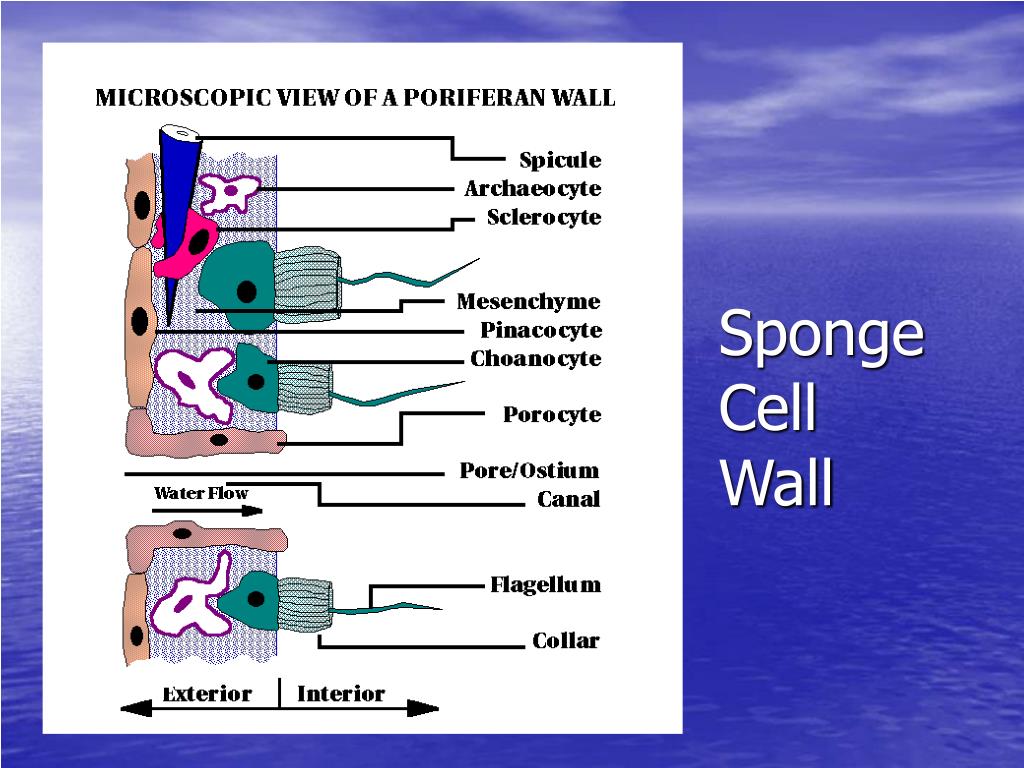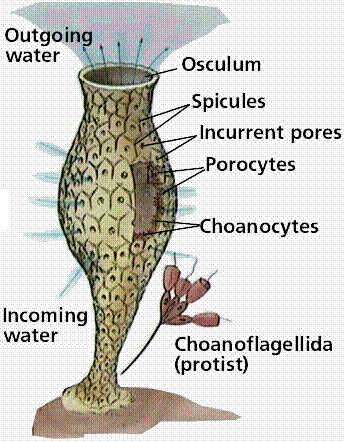

Many sponges can only be identified by microscopic examination of the skeleton, which makes certain identification from photographs difficult. The "skeleton" of the sponge is composed of tiny needle-like splinters called spicules, a mesh of protein called spongin, or a combination of both. Sponges are very effective filter feeders, since they are able to capture and eat particles as small as bacteria as well as much larger particles. Another type of cell, called an amebocyte, takes the food to other cells within the sponge. Second, the sticky collars of the collar cells pick up tiny bits of food brought in with the water.

The water brings in nutrients and oxygen, while it carries out waste and carbon dioxide. First, they beat their flagella back and forth to force water through the sponge. The collar cells have a sticky, funnel shaped collar and a hairlike whip, called a flagellum. Within the canals of the sponge, chambers are lined with specialized cells called choanocytes, or collar cells. The scientific term for sponges is Porifera which literally means "pore-bearing." A sponge is covered with tiny pores, called ostia, which lead internally to a system of canals and eventually out to one or more larger holes, called oscula. A sponge is a bottom-dwelling creature which attaches itself to something solid in a place where it can, hopefully, receive enough food to grow. SPONGES: They are Nothing Like Sponge Bob!Īlthough they may look plant-like, sponges are the simplest of multi-cellular animals.


 0 kommentar(er)
0 kommentar(er)
